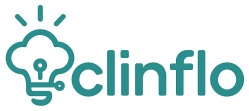Many readers may have heard of BioMedical Concepts (BCs). Some may also be aware of USDM — the Unified Study Definition Model, part of CDISC’s Digital Data Flow initiative.
In this post, I’d like to share a few thoughts on how BCs — as a core part of a USDM-based protocol — hold the key to connecting the dots across clinical trial design, data capture, and submission.
1. What is a BioMedical Concept (BC)?
BioMedical Concept is a structured way to represent a clinical idea — such as “Blood Pressure” — that can be used consistently across protocol authoring, form design, data acquisition, and SDTM mapping.
To explain what a BC is, it’s helpful to begin with what it isn’t.
2. Why CDASH and SDTM Fall Short
SDTM provides a framework for representing clinical data once it has been collected. It’s about the presentation of data — not the intent or context behind it.
CDASH attempted to bridge the gap between SDTM domains and the way data might appear on an eCRF (electronic Case Report Form). This works well if:
- You’re using traditional EDC
- You’re happy for the SDTM domain to govern the form design
But it doesn’t support other data sources (like wearables), and neither CDASH nor SDTM speak in clinical terms that physicians or medical writers would naturally use.
3. A Simple Example: Blood Pressure
Let’s take Blood Pressure as a concept:
Clinical Meaning: Measurement of a participant’s arterial pressure at a point in time.
This concept includes multiple elements:
- Systolic pressure
- Diastolic pressure
- Measurement method (manual/automated)
- Position (e.g., seated, supine)
- Units (e.g., mmHg)
- Date/time of measurement
A BC encapsulates all of this — not just as isolated fields, but as a semantically meaningful bundle that can drive protocol design, form creation, and SDTM mapping.
In SDTM, parts of this might appear in VSLOC (“Left Arm”), VSMETHOD (“Manual”), and so on — but only after data has already been captured.
4. Why BCs Matter
Here’s why BioMedical Concepts are so powerful:
✅ Traceability: You can follow a data point from protocol through to SDTM, preserving its meaning.
✅ Foundation for automation: One BC can drive metadata for the protocol, the CRF, and the SDTM.
✅ Standardisation: Ensures consistent representation of clinical concepts across studies and systems.
✅ Reuse: A concept like “Blood Pressure” can be used across multiple trials without redefining it each time.
5. Forget the Form: A New Paradigm
In legacy systems, the form was the data model. One form = one dataset. This forces a brittle one-to-one mapping that breaks down in a multi-source world.
BCs change this.
The Schedule of Activities (SoA) defines when something should be captured. Whether that happens via eCRF, wearable, or external lab system is irrelevant to the data structure. BCs provide the standardised concept, regardless of method.
With BCs, we finally separate data definition from form layout.
6. Bridging Past and Future
One of the most exciting things about BCs? They’re backward compatible.
Even if your organisation has only been producing SDTM datasets, you can retrospectively apply BCs to recover the clinical meaning behind historical data.
That means we move from:
“The AI thinks this might be blood pressure”
to
“The AI knows this is blood pressure.”
By running historical protocols through an AI-enabled USDM v4 converter (with a good library of BCs), you can reclaim meaningful metadata from the past — and make it actionable in the future.
7. BCs, USDM, and AI
To power AI-driven automation — protocol interpretation, study build, even SAP generation — you need a rich, structured foundation.
That foundation is built on:
- USDM to define the study structure
- BCs to define the clinical meaning of what’s being collected
If your eClinical platform supports precise BC mappings (e.g., timepoint, unit of measure), then LLMs can consistently convert protocols into structured metadata — ready for use in study design, simulation, and execution.
8. Standardisation is Key
A word of caution: for BCs to work across silos, interpretation must be standardised.
If each function — pharmacovigilance, data management, biostats — interprets BCs differently, the benefits are lost.
Standardising the application of BCs across the organisation is essential. Fortunately, CDISC has published guidance for defining sponsor-specific BCs, and there’s growing interest in harmonised, shared libraries.
9. The Future of Clinical Trial Execution
Here’s what the future could look like:
- Protocols are authored using structured tools that define BCs
- Study builds are generated in real time
- Edit checks, derivations, and SDTM mappings are auto-created
- AI simulates data to test scientific and operational scenarios
- The SAP is generated and implemented instantly
- SDTM datasets begin generating from the very first patient
All of this — in a matter of days.
10. A Message to eClinical Developers
🏁 On your marks. Get set. Go.
The race is on.
The standards are ready.
Those who embrace BioMedical Concepts and USDM will be at the forefront of a new era in clinical trial execution — one defined not by forms and formats, but by meaning.
Special Thanks
Dave Iburson-Hurst for input to this article.
Discover more from ClinFlo Consulting
Subscribe to get the latest posts sent to your email.

